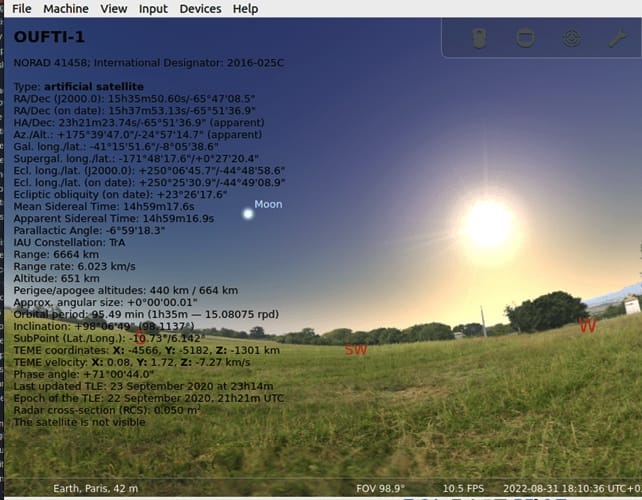How To Install Stellarium on Ubuntu 22.04 LTS

In this tutorial, we will show you how to install Stellarium on Ubuntu 22.04 LTS. For those of you who didn’t know, Stellarium is a free and open-source planetarium, licensed under the terms of the GNU General Public License. It is similar to how you would view the sky using your eyes or telescope. With Stellarium, you will get a powerful close view of the sky and plenty of features are at your disposal to spice your view. Stellarium is available for Linux, Windows, and macOS.
This article assumes you have at least basic knowledge of Linux, know how to use the shell, and most importantly, you host your site on your own VPS. The installation is quite simple and assumes you are running in the root account, if not you may need to add ‘sudo‘ to the commands to get root privileges. I will show you the step-by-step installation of the Stellarium planetarium on Ubuntu 22.04 (Jammy Jellyfish). You can follow the same instructions for Ubuntu 22.04 and any other Debian-based distribution like Linux Mint, Elementary OS, Pop!_OS, and more as well.
Prerequisites
- A server running one of the following operating systems: Ubuntu 22.04, 20.04, and any other Debian-based distribution like Linux Mint.
- It’s recommended that you use a fresh OS install to prevent any potential issues.
- SSH access to the server (or just open Terminal if you’re on a desktop).
- A
non-root sudo useror access to theroot user. We recommend acting as anon-root sudo user, however, as you can harm your system if you’re not careful when acting as the root.
Install Stellarium on Ubuntu 22.04 LTS Jammy Jellyfish
Step 1. First, make sure that all your system packages are up-to-date by running the following apt commands in the terminal.
sudo apt update sudo apt upgrade sudo apt install wget apt-transport-https gnupg2 software-properties-common
Step 2. Installing Stellarium on Ubuntu 22.04.
By default, Stellarium is not available on Ubuntu 22.04 base repository. Now install the add Stellarium PPA repository to your system using the following command:
echo 'deb [signed-by=/usr/share/keyrings/stellarium.gpg] https://ppa.launchpadcontent.net/stellarium/stellarium-releases/ubuntu jammy main' | sudo tee -a /etc/apt/sources.list.d/stellarium.list
Next, import the GPG key using the following command:
sudo gpg --no-default-keyring --keyring /usr/share/keyrings/stellarium.gpg --keyserver keyserver.ubuntu.com --recv-keys 4283D01497ADF8D09CFA9B6C1932F485C68D72A5
After the repository has been added successfully, you can then proceed to install Stellarium on Ubuntu using the command shown in the output below:
sudo apt update sudo apt install stellarium
Step 3. Accessing Stellarium on Ubuntu 22.04.
Once successfully installed on your Ubuntu system, run the following path on your desktop to open the path: Activities -> Show Applications -> Stellarium Alternatively, you can launch it from the terminal with this command:
stellarium

Congratulations! You have successfully installed Stellarium. Thanks for using this tutorial for installing Stellarium planetarium on Ubuntu 22.04 LTS Jammy Jellyfish system. For additional help or useful information, we recommend you check the official Stellarium website.